-
ORIGINAL ARTICLE12-16-2024
Construction and validation of an educational game on biosafety in the central sterile supply department
Revista Brasileira de Enfermagem. 2024;77(6):e20230478
Abstract
ORIGINAL ARTICLEConstruction and validation of an educational game on biosafety in the central sterile supply department
Revista Brasileira de Enfermagem. 2024;77(6):e20230478
DOI 10.1590/0034-7167-2023-0478
Views0See moreABSTRACT
Objectives:
to construct and validate an educational game on biosafety in the Central Sterile Supply Department of a hospital in Curitiba, PR.
Methods:
the study was conducted using a quantitative approach, employing applied and technological research with an exploratory design. The process was divided into six stages, from the definition of the theme to the validation and application of the game. The study was carried out from May to August 2022, involving 17 nursing professionals from a Central Sterile Supply Department during day and night shifts, as well as 9 judges.
Results:
the study resulted in the construction of a board game named by the authors as “My Health First.”
Conclusions:
the research achieved its objective of constructing and validating an educational game. By reflecting on professional practice and correlating the occupational risks present, the professionals were able to list safe actions, identify problems, and seek solutions.
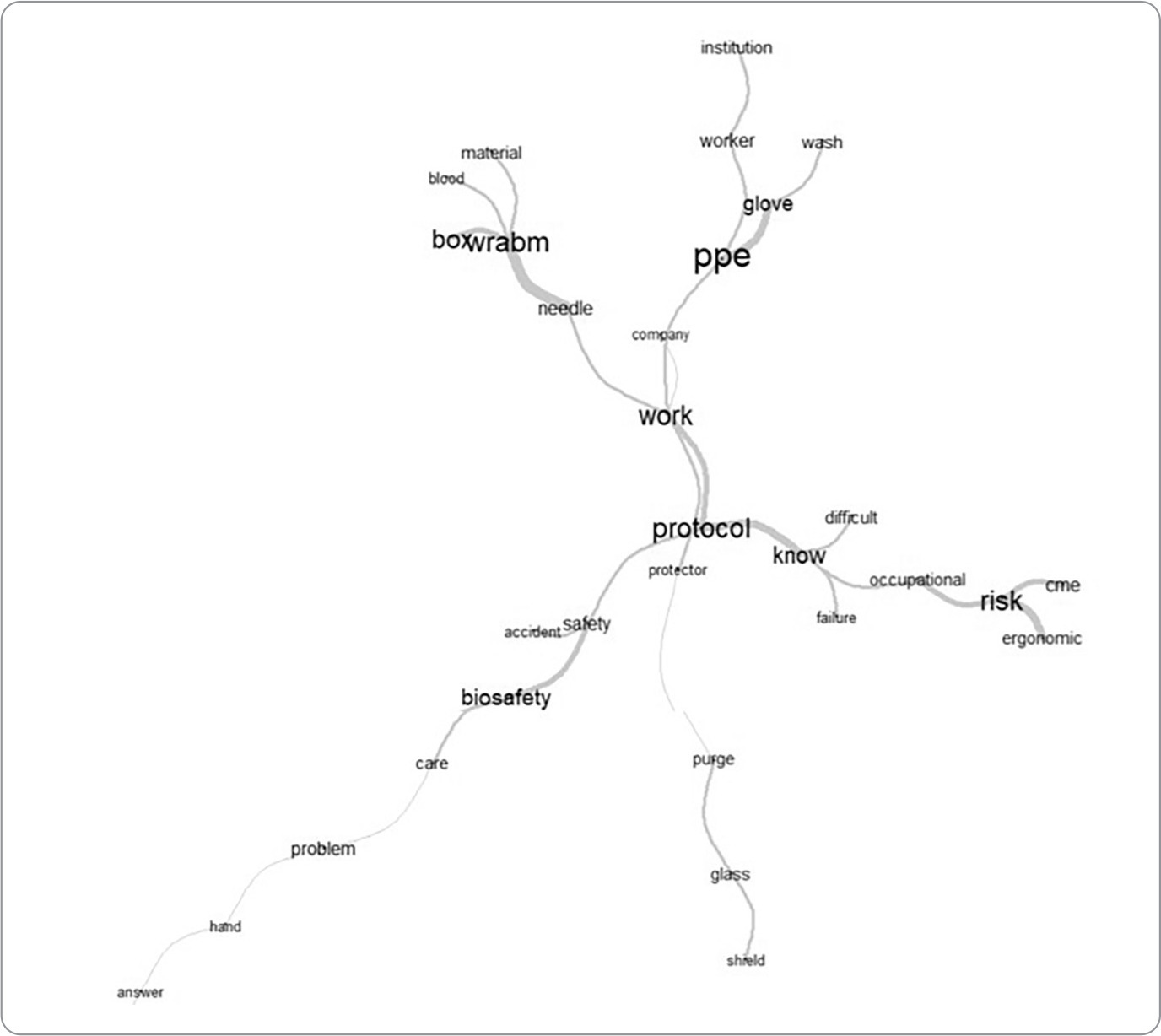
-
ORIGINAL ARTICLE12-16-2024
Health literacy development of Primary Health Care patients: qualitative research
Revista Brasileira de Enfermagem. 2024;77(6):e20240154
Abstract
ORIGINAL ARTICLEHealth literacy development of Primary Health Care patients: qualitative research
Revista Brasileira de Enfermagem. 2024;77(6):e20240154
DOI 10.1590/0034-7167-2024-0154
Views0See moreABSTRACT
Objectives:
to identify the process of health literacy development among primary care patients, relating it to their self-care practices.
Methods:
qualitative, prospective research with 22 patients from two Family Health Strategy units. Data were obtained through individual semi-structured interviews, examined through descriptive statistics and thematic content analysis.
Results:
the results discuss how participants learn about health and how this resonates in their behaviors, culminating in two thematic categories: “Health knowledge construction”; and “Dialogue between health knowledge construction and patient care actions”.
Final Considerations:
health knowledge is developed mainly through interpersonal relationships, mediated by health professionals through bonding and communication. Community educational actions and training of health professionals in communication can promote health literacy and self-care among patients.
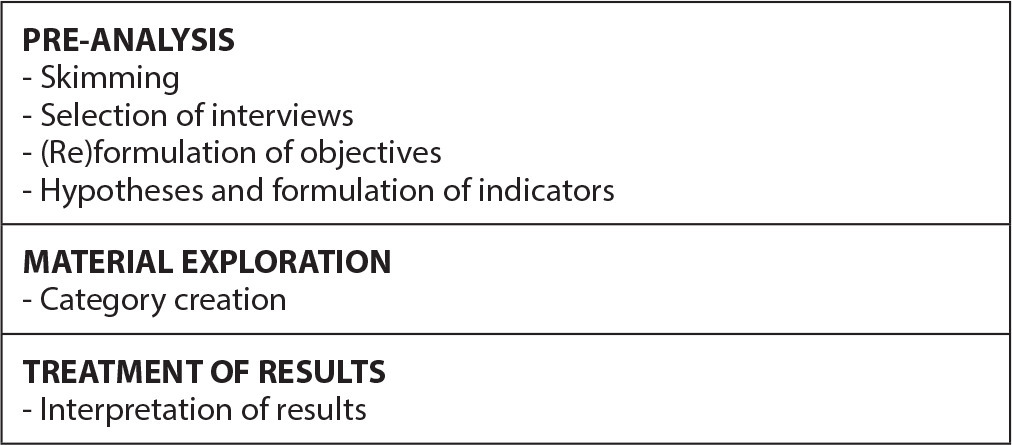
-
ORIGINAL ARTICLE12-16-2024
Analysis of omission of antimicrobial doses in Intensive Care Units
Revista Brasileira de Enfermagem. 2024;77(6):e20240102
Abstract
ORIGINAL ARTICLEAnalysis of omission of antimicrobial doses in Intensive Care Units
Revista Brasileira de Enfermagem. 2024;77(6):e20240102
DOI 10.1590/0034-7167-2024-0102
Views0See moreABSTRACT
Objectives:
to analyze the rate of antimicrobial dose omission in intensive care units.
Methods:
cross-sectional study carried out between March 1 and September 30, 2023, in intensive care units of a University Hospital in Rio de Janeiro.
Results:
the sample consisted of 452 prescriptions and 1467 antimicrobial doses. The dose omission rate was 4.29%. Each antimicrobial prescribed increased the chance of omission by 51%. The strategy of double-checking prescriptions helped prevent 30% of antimicrobial dose omissions (p=0.0001).
Conclusions:
monitoring the omission of antimicrobial doses can guide nursing actions to improve quality and patient safety, contributing to the prevention of medication errors, antimicrobial stewardship and the fight against antimicrobial resistance.
-
REVIEW12-16-2024
Recommendations for guidelines for promoting mental health in the workplace: an umbrella review
Revista Brasileira de Enfermagem. 2024;77(6):e20240086
Abstract
REVIEWRecommendations for guidelines for promoting mental health in the workplace: an umbrella review
Revista Brasileira de Enfermagem. 2024;77(6):e20240086
DOI 10.1590/0034-7167-2024-0086
Views1See moreABSTRACT
Objectives:
to summarize the recommendations of guidelines for promoting mental health in the workplace.
Methods:
an umbrella review, according to Joanna Briggs Institute and Preferred Reporting Items for Systematic reviews and Meta-Analyses methodological assumptions. Data collection was carried out in January 2021 and updated in July 2023 in the American Psychological Association, Cochrane Library, EMBASE, National Library of Medicine, and Scopus databases. Systematic reviews that assessed guidelines with recommendations for mental health care for workers were included. PROSPERO registration CRD42023461845.
Results:
four systematic reviews published between 2015 and 2018 were identified. The abstracts highlighted actions that facilitate and inhibit the recommendations as well as three categories of intervention: primary prevention – worker protection; secondary prevention – promoting workers’ mental health; and tertiary prevention – supporting, monitoring and rehabilitating workers upon returning to work.
Conclusions:
the interventions are based on prevention, promotion and early recognition, support and rehabilitation of mental health problems.
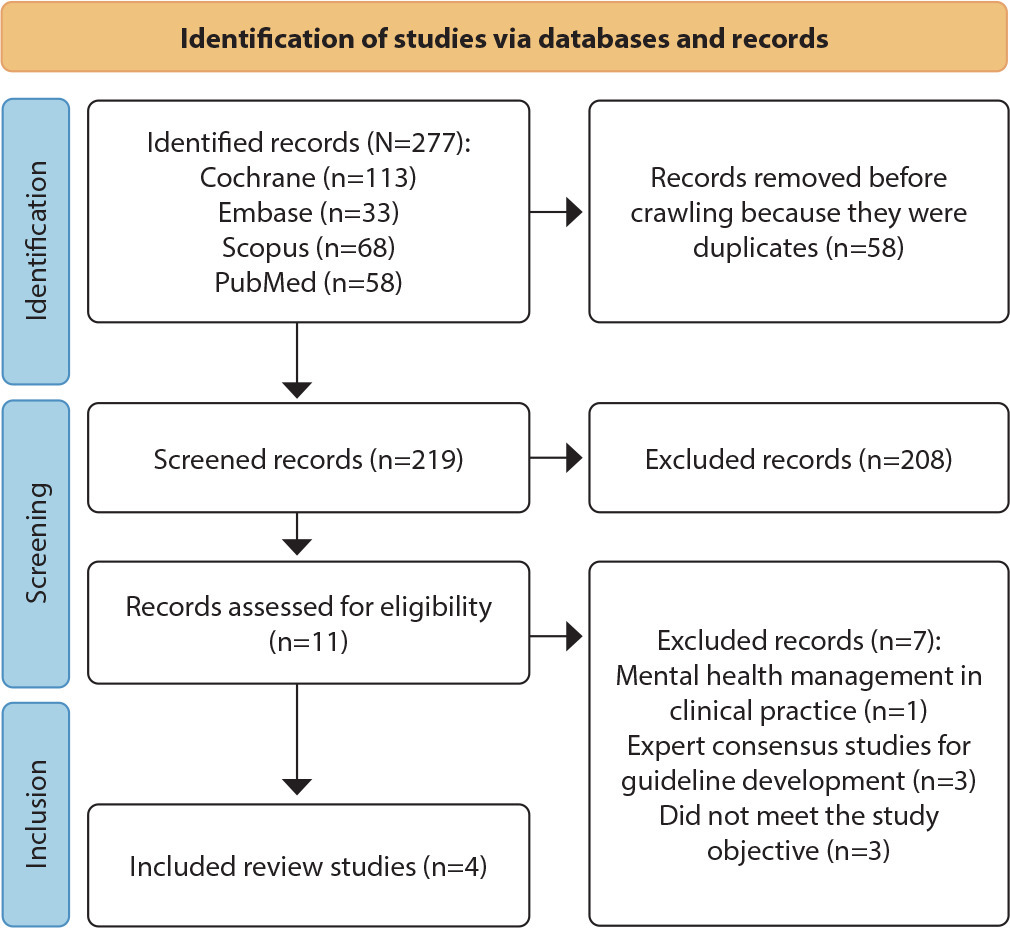
-
ORIGINAL ARTICLE12-16-2024
Psychometric analysis of ProQOL-BR in nursing: building hospital safety and protection
Revista Brasileira de Enfermagem. 2024;77(6):e20240085
Abstract
ORIGINAL ARTICLEPsychometric analysis of ProQOL-BR in nursing: building hospital safety and protection
Revista Brasileira de Enfermagem. 2024;77(6):e20240085
DOI 10.1590/0034-7167-2024-0085
Views0See moreABSTRACT
Objectives:
to analyze the psychometric properties of the ProQOL-BR instrument in hospital nursing professionals.
Methods:
a methodological study to validate the ProQOL-BR. Confirmatory factor analysis, assessment of local and global adjustment quality, Pearson hypothesis testing and Cronbach’s alpha internal consistency analysis were used.
Results:
a total of 490 professionals participated. The model presents adequate quality due to factor weights (λ≥ 0.40), acceptable overall fit quality and adequate chi-square ratio and degrees of freedom (χ2/g.1=2.51) for the parameters of CFI (0.923), GFI (0.902), TLI (0.914) and RMSEA (0.042). In terms of validity, it was shown to be adequate with CC=0.89. The internal consistency obtained by standardized Cronbach’s alpha was 0.761. Criterion validity was shown to be favorable with significant correlations (0.001).
Conclusions:
the instrument was validated regarding content, criteria and reliability. Three questions were removed from the original instrument, ProQOL-BR, leaving the final instrument with 25 questions.
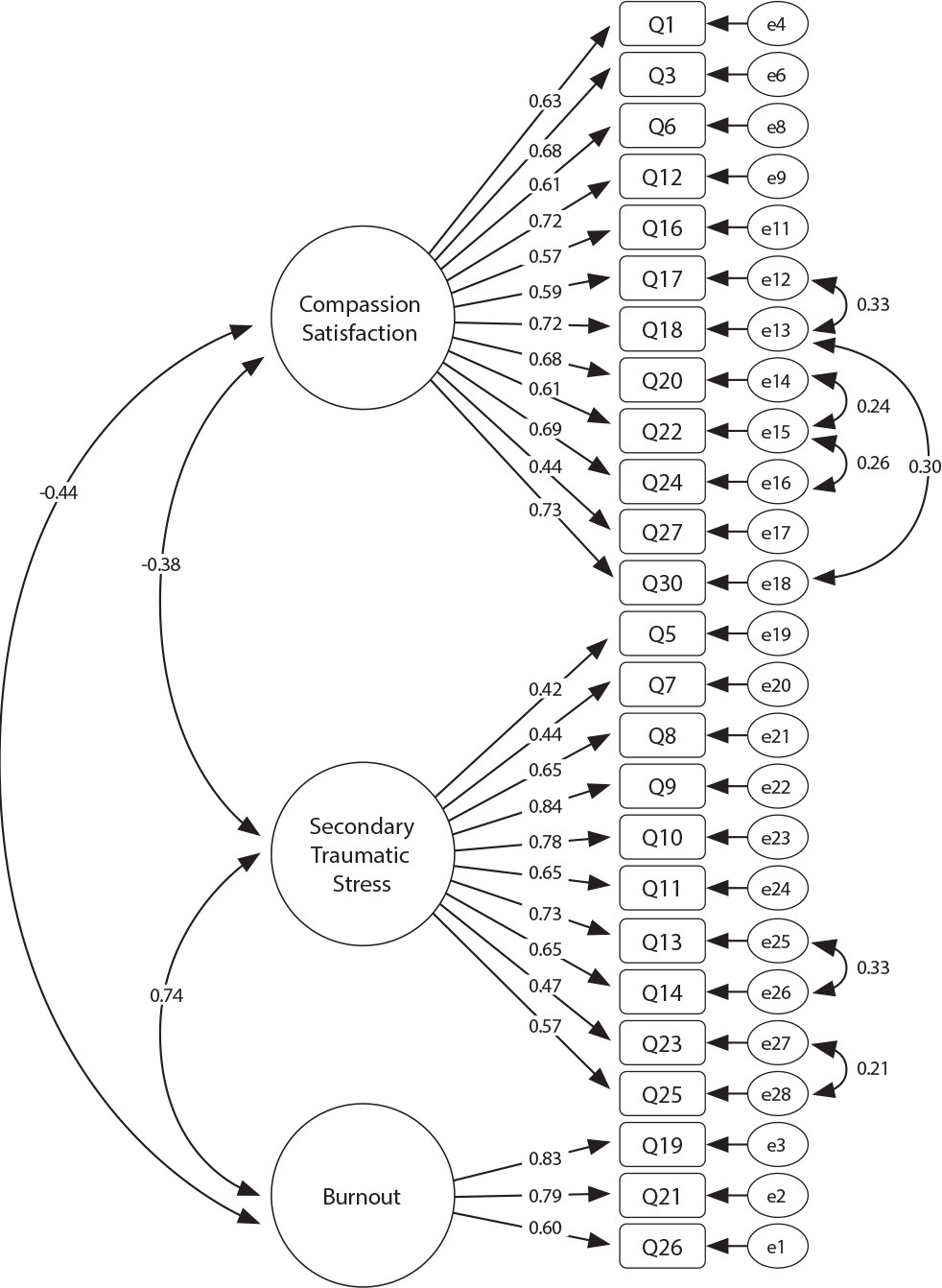
-
12-16-2024
GerenciaDOR™: development of digital technology by nurses for the assessment of patients with chronic pain
Revista Brasileira de Enfermagem. 2024;77(6):e20240050
Abstract
GerenciaDOR™: development of digital technology by nurses for the assessment of patients with chronic pain
Revista Brasileira de Enfermagem. 2024;77(6):e20240050
DOI 10.1590/0034-7167-2024-0050
Views0See moreABSTRACT
Objectives:
to develop a digital technological solution (prototype) for assessing patients with chronic pain.
Methods:
this is a methodological and technological development study based on the Human-Centered Design framework and the principles of Patient-Centered Care. The prototype guides patients through a body diagram and directs them to an evaluation using specific instruments that address the multidimensional aspects of chronic pain.
Results:
the GerenciaDOR* project enables navigation through the Web App screens, providing access to pain assessment features up to the presentation of results.
Final Considerations:
the study describes a systematic approach to pain assessment and expands nurses’ knowledge in pain management. Additionally, it can promote the development of other digital technologies for chronic pain assessment and contribute to a multidisciplinary, patient centered treatment.
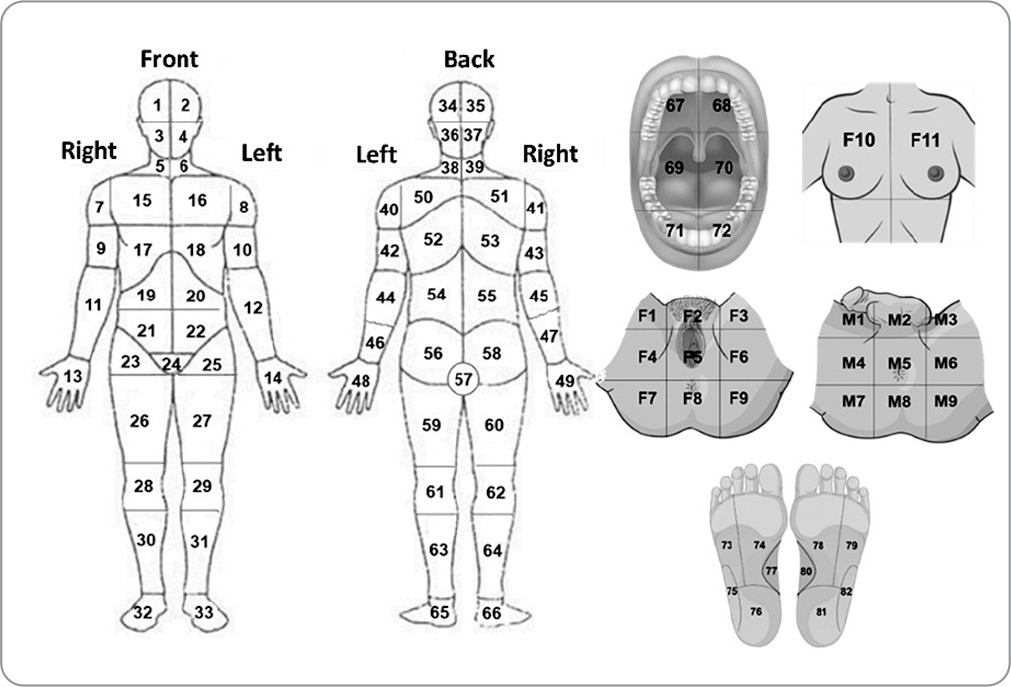
-
ORIGINAL ARTICLE12-16-2024
Respectful care for postpartum women with sickle cell disease: a netnographic study
Revista Brasileira de Enfermagem. 2024;77(6):e20230545
Abstract
ORIGINAL ARTICLERespectful care for postpartum women with sickle cell disease: a netnographic study
Revista Brasileira de Enfermagem. 2024;77(6):e20230545
DOI 10.1590/0034-7167-2023-0545
Views1See moreABSTRACT
Objectives:
to analyze principles of respectful maternity care in narratives of postpartum women with sickle cell disease, relating them to Sustainable Development Goals.
Methods:
netnographic study, with two videos published in 2020. Deductive iconographic and thematic analysis by Respectful Maternity Care Charter, organized in MAXQDA.
Results:
principles identified were the right to: freedom from harm and ill-treatment; information, informed consent, refusal of medical procedures, and respect for their choices and preferences including companion; be considered a person from birth, with dignified and respectful treatment; health at the highest possible level; newborns being with their parents or guardians. The Sustainable Development Goals for women by 2030 were not positively contemplated in postpartum women’s experience.
Final Considerations:
it is appropriate that health workers qualify themselves to provide respectful maternity care, with qualified listening, understanding, and resolution of unique demands of postpartum women with sickle cell disease, seeking equality in care for women.
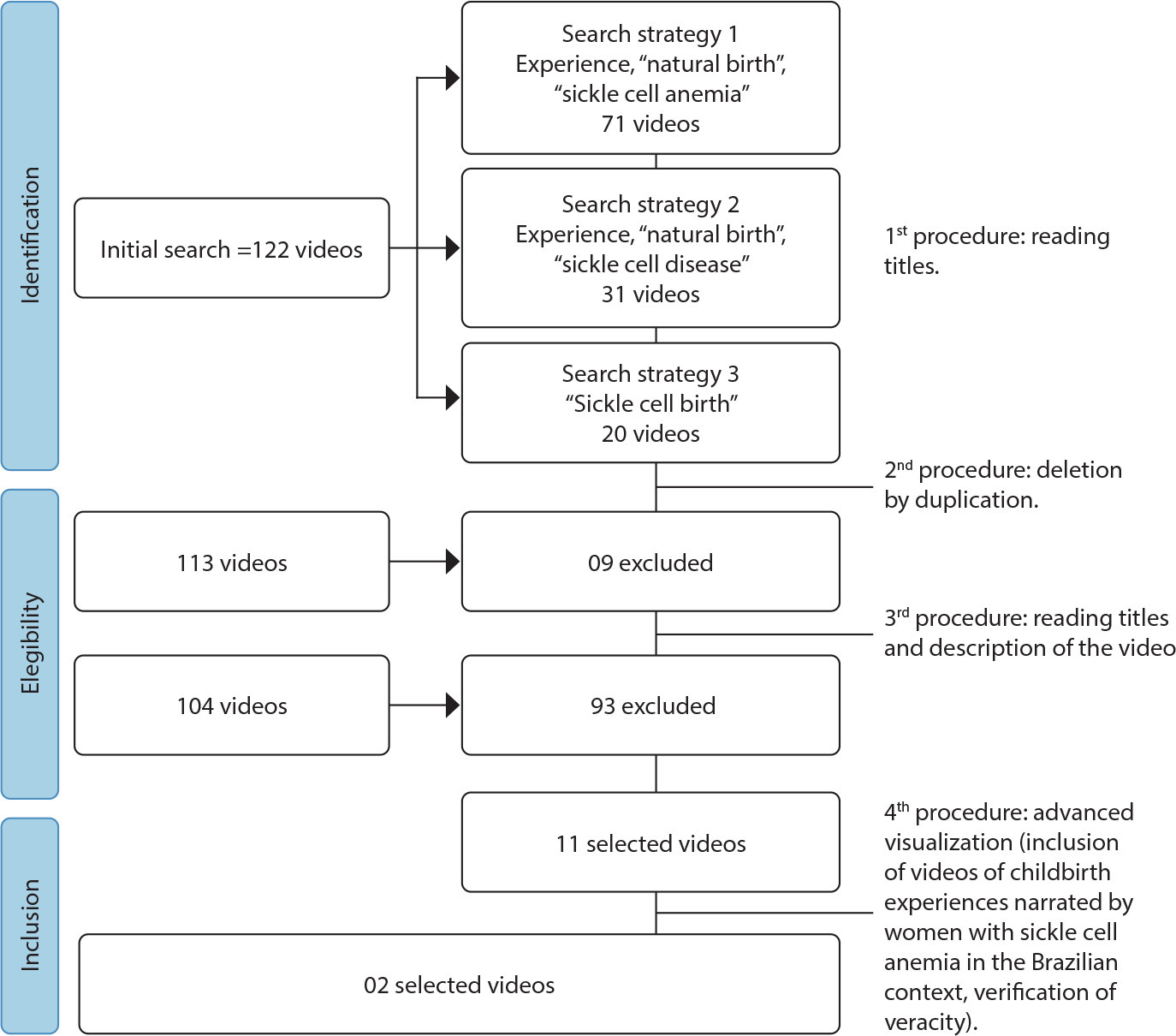
-
REVIEW12-16-2024
Strategies for expanding vaccination coverage in children in Brazil: systematic literature review
Revista Brasileira de Enfermagem. 2024;77(6):e20230343
Abstract
REVIEWStrategies for expanding vaccination coverage in children in Brazil: systematic literature review
Revista Brasileira de Enfermagem. 2024;77(6):e20230343
DOI 10.1590/0034-7167-2023-0343
Views1See moreABSTRACT
Objectives:
to identify the strategies found in the literature for increasing vaccination coverage among children in Brazil. It is justified mainly by the current scenario of falling vaccination coverage.
Methods:
systematic literature review. The search was carried out in the Pubmed (MEDLINE), Embase and Scopus databases, following the PRISMA guidelines.
Results:
initially, 4,824 results were returned. In the end, 6 studies were included for narrative synthesis using the SWiM methodology. Of these, 50% dealt with studies related to the Bolsa Família Program (PBF). The others explored strategies for approaching parents directly, Rapid Vaccination Monitoring (MRV) and the Community Health Agents Program (PACS). The PBF did not guarantee compliance with the conditionality of keeping vaccinations up to date. The MRV and PACS are effective strategies, especially because they allow active search for absentees.
Conclusions:
we conclude that more publications are needed on strategies to increase vaccination coverage among children in Brazil.

-
ORIGINAL ARTICLE03-15-2024
Is there scientific relevance to the plot of films and documentaries about eating disorders?
Revista Brasileira de Enfermagem. 2024;77(1):e20220547
Abstract
ORIGINAL ARTICLEIs there scientific relevance to the plot of films and documentaries about eating disorders?
Revista Brasileira de Enfermagem. 2024;77(1):e20220547
DOI 10.1590/0034-7167-2022-0547
Views1See moreABSTRACT
Objectives:
to analyze films and documentaries about eating disorders from the last twenty years, identifying the way they approach the topic as well as their relevance for didactic use in teaching the health field.
Methods:
a descriptive study, whose data collection was carried out on the main streaming and video platforms, resulting in the survey of 60 media. Of these, only 25 had audio/subtitles in Portuguese (inclusion criteria). scientific relevance was analyzed considering psychopathological and epidemiological aspects of these disorders. A questionnaire about the plot, characters and descriptive data analysis were used.
Results:
most media were dramas about female teenagers who tried to conform to beauty stereotypes, whose symptoms portrayed converged with current medical diagnostic manuals.
Conclusions:
in practical terms, a classificatory list of 11 media was prepared that could be used as a teaching resource for teaching this topic in the health field.
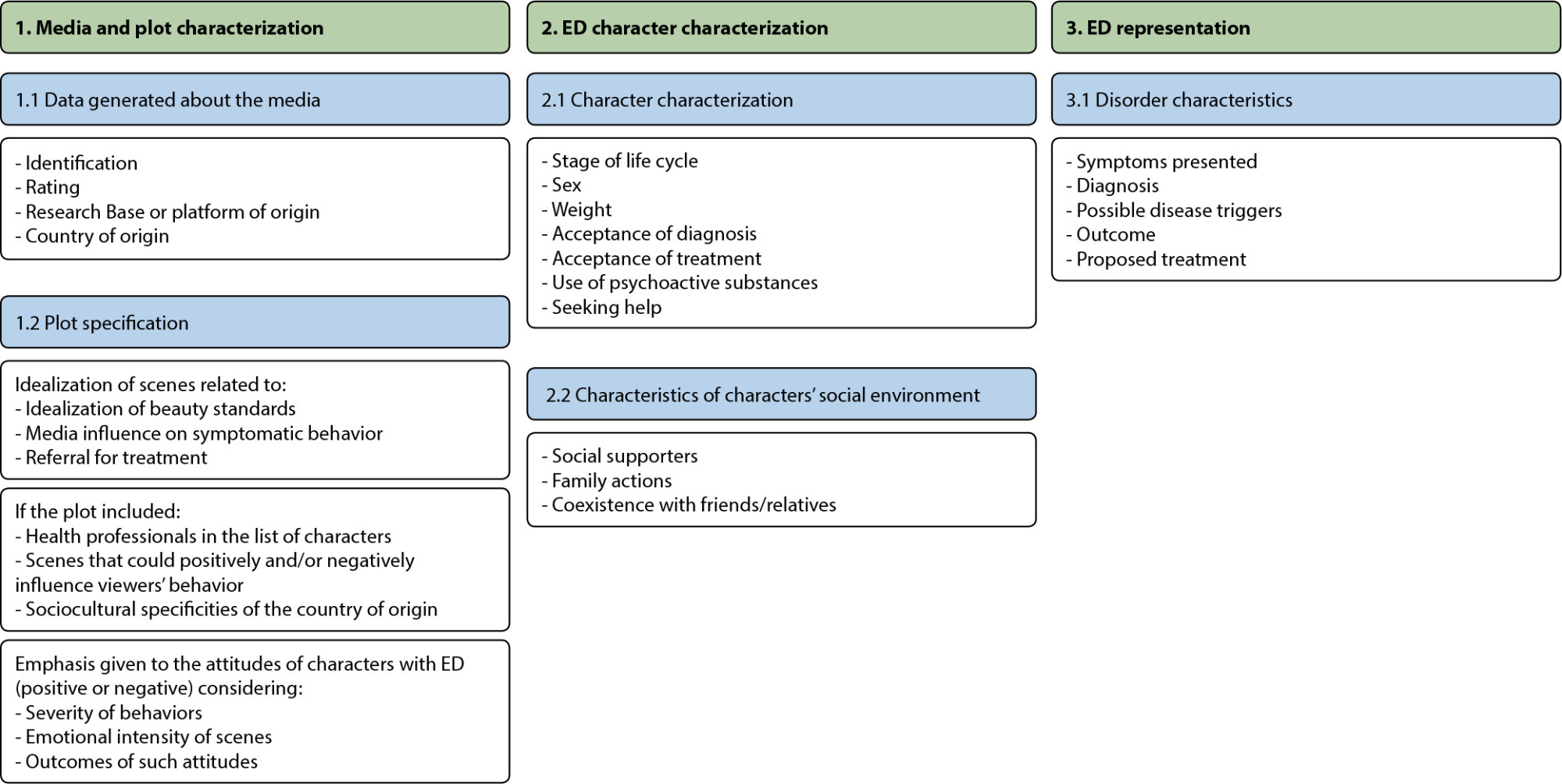
-
ORIGINAL ARTICLE02-26-2024
Technological prospecting of patents related to monitoring accidents due to falls in hospitals
Revista Brasileira de Enfermagem. 2024;77(1):e20230084
Abstract
ORIGINAL ARTICLETechnological prospecting of patents related to monitoring accidents due to falls in hospitals
Revista Brasileira de Enfermagem. 2024;77(1):e20230084
DOI 10.1590/0034-7167-2023-0084
Views0See moreABSTRACT
Objectives:
to map the production of technologies aimed at monitoring falls in a hospital environment protected by registered patents.
Methods:
a technological prospecting of international patents, with a quantitative approach, with search carried out between February and March 2022 in the Derwent Innovations Index database with descriptors fall, hospital, monitoring.
Results:
212 patents were found, with the majority filed and published since 2010, by Tran B (9) and Cerner Innovation Inc (9), focused on health technology. Universities were responsible for 13% of deposits. There was a predominance of records from the United States (43.4%), China (21.7%) and Japan (12.3%), in addition to technological strategies classified as devices for the environment (80.7%) and for preventing falls (66.5%) as well as trend towards resources with multiple functionalities in the same technology.
Conclusions:
the plurality of functions in the same device reflects the search for optimizing resources and the concern with comprehensive care.
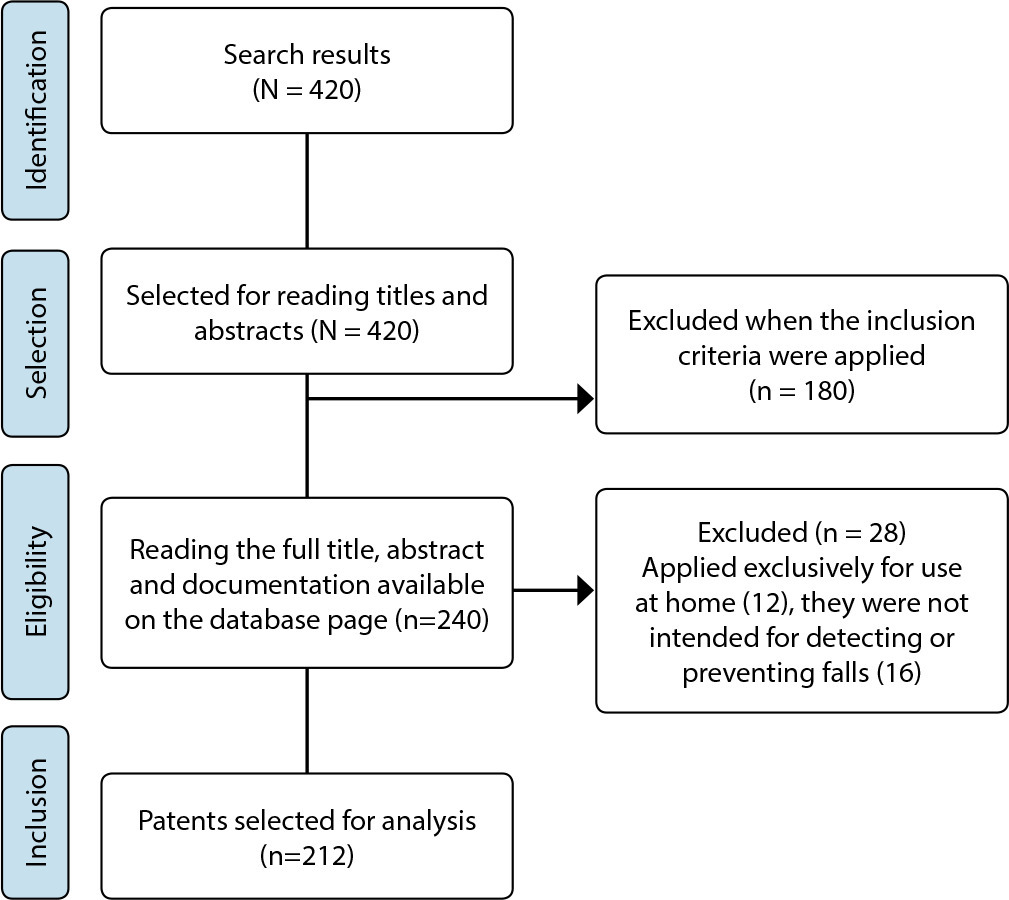
-
REVIEW03-15-2024
Use of podcasts for health education: a scoping review
Revista Brasileira de Enfermagem. 2024;77(1):e20230096
Abstract
REVIEWUse of podcasts for health education: a scoping review
Revista Brasileira de Enfermagem. 2024;77(1):e20230096
DOI 10.1590/0034-7167-2023-0096
Views0See moreABSTRACT
Objectives:
to map the scientific evidence related to the characteristics, themes, and outcomes of using health education podcasts aimed at individuals over 18 years of age in intra or extrahospital environments.
Methods:
a scoping review, based on the Joanna Briggs Institute method, conducted in 11 databases, including studies from 2004 to 2022.
Results:
11 studies were selected, categorized, highlighting the characteristics, evaluated outcomes, areas, and conditions of podcast application, indicating it as an effective tool for promoting behavioral change, health promotion, and social interaction, demonstrating its potential to improve well-being, quality of life, and user/client autonomy.
Conclusions:
the use of podcasts proves to be an effective, innovative, and low-cost tool, with a significant social impact, being effective for behavioral change, satisfaction, and social interaction. However, the lack of comprehensive studies on podcast development methodologies represents challenges to be overcome.

-
ORIGINAL ARTICLE03-15-2024
Health Management of an HIV Testing and Counseling Center: Nursing Contributions
Revista Brasileira de Enfermagem. 2024;77(1):e20230217
Abstract
ORIGINAL ARTICLEHealth Management of an HIV Testing and Counseling Center: Nursing Contributions
Revista Brasileira de Enfermagem. 2024;77(1):e20230217
DOI 10.1590/0034-7167-2023-0217
Views0See moreABSTRACT
Objectives:
to analyze the role of nursing in the establishment of an HIV/AIDS Testing and Counseling Center in a Brazilian municipality.
Methods:
a historical study utilizing primary sources, including documents and oral accounts, involving a total of ten participants. The study encompasses the years 1997 and 1998. The research took place at the Testing and Counseling Center in São João de Meriti. Data was collected from March to May 2022.
Results:
nursing made significant contributions through the development of training initiatives led by nurses, who were also responsible for individual and group counseling, as well as HIV testing requests.
Final Considerations:
nursing played a crucial role in the center and in the management of Sexually Transmitted Infections, being involved in all stages of treatment in accordance with current public health policy.
-
REVIEW02-26-2024
Practice of immersion in hot water to relieve pain in neonatology: an integrative review
Revista Brasileira de Enfermagem. 2024;77(1):e20230260
Abstract
REVIEWPractice of immersion in hot water to relieve pain in neonatology: an integrative review
Revista Brasileira de Enfermagem. 2024;77(1):e20230260
DOI 10.1590/0034-7167-2023-0260
Views1See moreABSTRACT
Objectives:
to identify immersion use in hot water to relieve pain in newborns.
Methods:
an integrative literature review, carried out in the PubMed, VHL, EMBASE, Scopus, CINAHL, Cochrane and SciELO databases, with investigations in English, Spanish, French or Portuguese, published between 2002 and 2022. The Health Sciences Descriptors (DeCS) and Medical Subject Headings (MeSH) were used to answer the following question: what are the uses of hot water immersion in relieving pain in newborns?
Results:
nine studies were included, mainly Brazilian, experimental, with a predominance of strong and moderate levels of evidence. Hydrotherapy and bath use (immersion and bandaging) was observed, promising interventions in reducing pain scores, assessed using scales, physiological and endocrine parameters.
Conclusions:
hot water proved to be a promising non-pharmacological intervention in relieving pain in infants in different contexts.

-
ORIGINAL ARTICLE05-13-2024
The influence of the internet on choices about older adults’ health and well-being
Revista Brasileira de Enfermagem. 2024;77(1):e20230321
Abstract
ORIGINAL ARTICLEThe influence of the internet on choices about older adults’ health and well-being
Revista Brasileira de Enfermagem. 2024;77(1):e20230321
DOI 10.1590/0034-7167-2023-0321
Views0See moreABSTRACT
Objectives:
to describe the profile of older adults who access the internet to search for health information and identify the factors that can influence older adults’ decisions about their health based on information collected online.
Methods:
391 older adults answered an online questionnaire regarding habits and satisfaction with information about health collected on the internet. Data processing involved Logistic Regression.
Results:
higher education reduces by 44% the likelihood of an older adult following the health recommendations on internet sites. However, social activities and self-perceived health increase the possibility of following the recommendations by 83% and 71%, respectively. The belief that the internet promotes healthy habits increases by 29.2 times the probability of an older adult following the advice.
Final Considerations:
knowing the profile of older adults who use the Internet can help professionals formulate public policies and build good information platforms on health and well-being.
-
ORIGINAL ARTICLE03-15-2024
Cultural adaptation and validity evidence of the Student Nurse Stressor-15 (SNS-15) Scale for Brazil
Revista Brasileira de Enfermagem. 2024;77(1):e20230356
Abstract
ORIGINAL ARTICLECultural adaptation and validity evidence of the Student Nurse Stressor-15 (SNS-15) Scale for Brazil
Revista Brasileira de Enfermagem. 2024;77(1):e20230356
DOI 10.1590/0034-7167-2023-0356
Views0See moreABSTRACT
Objectives:
to carry out the cultural adaptation and evaluation of validity evidence of the Student Nurse Stressor-15 (SNS-15) Scale for use in Brazil.
Methods:
psychometric study, conducted from the stages of translation, synthesis, back-translation, review by a committee of seven experts, pre-test and evaluation of measurement properties with 32 and 238 nursing students, respectively. Descriptive statistics, Exploratory Factor Analysis (EFA), and Confirmatory Factor Analysis (CFA) were performed. The reliability of the instrument was estimated using McDonald’s Omega (ω).
Results:
EFA subsidized the distribution of the fifteen SNS-15 items into four factors. Using AFC, satisfactory fit indices were achieved (Comparative Fit Index = 0.94; Tucker-Lewis Index = 0.93; Root Mean Square Error of Approximation = 0.06; Standardized Root Mean Square Residual = 0.16) and ω = 0.86.
Conclusions:
the Brazilian version of the SNS-15 presents evidence that confirms its validity and reliability.
-
ORIGINAL ARTICLE05-03-2024
Cancer patient satisfaction regarding the quality of information received: psychometric validity of EORTC QLQ-INFO25
Revista Brasileira de Enfermagem. 2024;77(1):e20230358
Abstract
ORIGINAL ARTICLECancer patient satisfaction regarding the quality of information received: psychometric validity of EORTC QLQ-INFO25
Revista Brasileira de Enfermagem. 2024;77(1):e20230358
DOI 10.1590/0034-7167-2023-0358
Views0See moreABSTRACT
Objectives:
to psychometrically validate the European Organization for Research and Treatment of Cancer Core Quality of Life Questionnaire EORTC QLQ-INFO25 instrument and identify the domains that influence patients’ perception of the information received.
Methods:
a cross-sectional methodology with cancer patients in a Brazilian philanthropic hospital institution. Sociodemographic and clinical instruments, EORTC QLQ-C30, EORTC QLQ-INFO25 and Supportive Care Needs Survey – Short Form 34 were used. Analysis occurred using Cronbach’s alpha coefficients, intraclass correlation, test-retest and exploratory factor analysis.
Results:
128 respondents participated. Cronbach’s alpha coefficient was 0.85. The test-retest obtained p-value=0.21. In the factor analysis, one item was excluded. Satisfaction with the information received was 74%, with three areas with averages below 70%. In open-ended questions, there was a greater desire for information.
Conclusions:
validity evidence was obtained with instrument reliability, consistency and stability. Respondents expressed satisfaction with the information received.
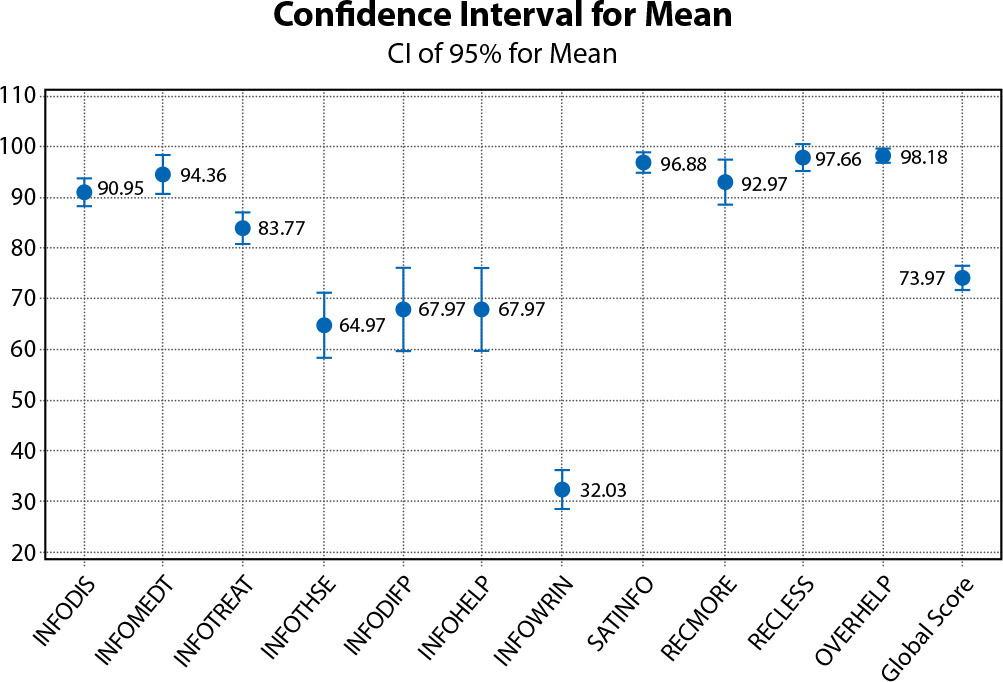
-
ORIGINAL ARTICLE11-02-2020
Elderly residents in the community: gaining knowledge to support a rehabilitation nursing program
Revista Brasileira de Enfermagem. 2020;73:e20200194
Abstract
ORIGINAL ARTICLEElderly residents in the community: gaining knowledge to support a rehabilitation nursing program
Revista Brasileira de Enfermagem. 2020;73:e20200194
DOI 10.1590/0034-7167-2020-0194
Views0See moreABSTRACT
Objective:
To analyze the socio-demographic and health conditions of the elderly living in the community and describe the pillars for the design of a rehabilitation nursing program in the community.
Methods:
Descriptive, cross-sectional study, with participation of 48 elderly selected by convenience sampling. Data collection took place between September 2018 and July 2019, in a health unit in northern Portugal, using a form.
Results:
All the elderly have pathological processes and overweight. Most of them are sedentary, have feelings of loneliness and inappropriate relational behaviors. In the last six months, 25% have fallen at least once, with notable changes in balance, lifestyles and perceived health status.
Conclusion:
The need for rehabilitation nurses to design and implement active aging programs that ensure individual accompaniment of the elderly by valuing lifestyles, balance training and promotion of social participation was highlighted.

-
ORIGINAL ARTICLE11-02-2020
Association of the functional capacity and violence in the elderly community
Revista Brasileira de Enfermagem. 2020;73:e20200209
Abstract
ORIGINAL ARTICLEAssociation of the functional capacity and violence in the elderly community
Revista Brasileira de Enfermagem. 2020;73:e20200209
DOI 10.1590/0034-7167-2020-0209
Views0See moreABSTRACT
Objective:
To analyze the relationship between the functional capacity of elderly community members and the sociodemographic and violence characteristics.
Methods:
Cross-sectional, epidemiological, analytical study with 159 elderly people. For data collection, a questionnaire was used for sociodemographic characterization; the Katz, Lawton and Brody scale; a questionnaire adapted from the FIBRA network; and the Conflict Tactics Scales, analyzed using descriptive and inferential statistics using Pearson’s chi-square test, Fisher’s exact test and multiple logistic regression models.
Results:
It was observed that the sociodemographic variables influence the prevalence of functional dependence for basic activities of daily living and reduction in advanced activities in elderly people with psychological and physical violence.
Conclusion:
The dependence of the elderly for basic and intermediate activities is related to characteristics such as advanced age, work exercise and knowing how to read and write. The participants’ functional dependence can favor violent outcomes, whether physical or psychological.
-
ORIGINAL ARTICLE02-10-2020
Repercussions of family violence: oral history of adolescents
Revista Brasileira de Enfermagem. 2020;73(1):e20180228
Abstract
ORIGINAL ARTICLERepercussions of family violence: oral history of adolescents
Revista Brasileira de Enfermagem. 2020;73(1):e20180228
DOI 10.1590/0034-7167-2018-0228
Views0See moreABSTRACT
Objective:
To know the repercussions of the experience of family violence from the oral history of adolescents.
Method:
Qualitative study based on the Oral History method, conducted from interviews with adolescents enrolled in a public school in Salvador, State of Bahia, Brazil. The data were systematized according to the thematic analysis and supported by theoretical references on family violence and adolescence.
Results:
Family violence implies physical illness associated with the damage caused by physical aggression and somatization of violent events, as well as compromising mental health, provoking feelings of deep sadness, self-injury behavior and suicidal ideation. All of these factors impair interpersonal relationships, school performance, as well as making them more vulnerable to alcohol intake.
Final Considerations:
The study indicates signs suggestive of grievance, from which the professionals should proceed the investigation in order to refute or confirm the experience of the phenomenon, as well as intervene in the cases.
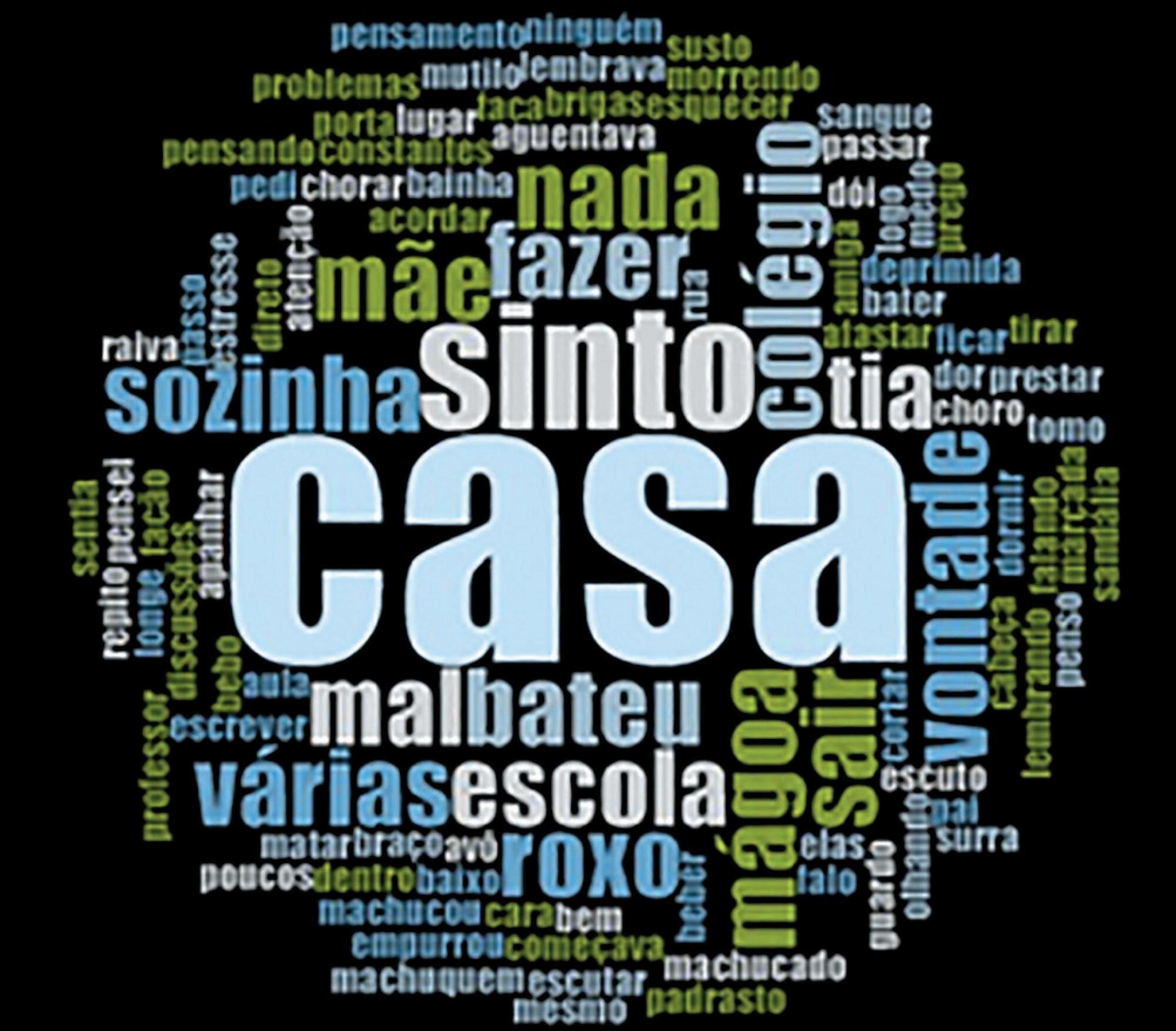
-
ORIGINAL ARTICLE08-19-2019
Terms of specialized nursing language for people with pressure injury
Revista Brasileira de Enfermagem. 2019;72(4):1028-1035
Abstract
ORIGINAL ARTICLETerms of specialized nursing language for people with pressure injury
Revista Brasileira de Enfermagem. 2019;72(4):1028-1035
DOI 10.1590/0034-7167-2018-0492
Views0See moreABSTRACT
Objective:
to validate the terms of the specialized nursing language used in care for hospitalized patients with Pressure Injury, identified in nurses’ records, mapping them with the terms of the International Classification for Nursing Practice (ICNP® 2017).
Methods:
methodological study, carried out at a School Hospital in 2018. It was performed: extraction of terms of medical records; normalization; cross-mapping between extracted terms and those in ICNP®; distribution in the seven axes; theoretical definition and validation of terms.
Results:
27,756 terms were extracted. The normalization resulted in 370 relevant terms, being: 225 listed and 145 not listed in the ICNP®, being 60 similar, 13 more comprehensive, 38 more restricted and 34 without agreement, all of which are validated.
Conclusion:
this study identified and validated terms used by nurses to assist people with Pressure Injury. These may contribute to the unification of professional nursing language in care for these clients.
-
ORIGINAL ARTICLE07-13-2020
Faith and spirituality in the meaning of life of the elderly with Chronic Kidney Disease
Revista Brasileira de Enfermagem. 2020;73:e20190323
Abstract
ORIGINAL ARTICLEFaith and spirituality in the meaning of life of the elderly with Chronic Kidney Disease
Revista Brasileira de Enfermagem. 2020;73:e20190323
DOI 10.1590/0034-7167-2019-0323
Views0See moreABSTRACT
Objective:
to understand faith and spirituality in the meaning of life of the elderly with Chronic Kidney Disease.
Methods:
a qualitative research based on Viktor Emil Frankl’s Logotherapy and Existential Analysis. Twenty elderly people were interviewed between August 2018 and January 2019, between 60 and 79 years old, who underwent dialysis in a private unit, a reference in nephrology in the city of Salvador, Bahia, Brazil.
Results:
two categories of analysis emerged: Meaning of faith in the lived of the elderly with Chronic Kidney Disease; Faith as a forerunner of the meaning of life.
Final considerations:
faith and spirituality were understood as a fundamental foundation in the search for the meaning of the study participants’ lives, besides unveiling itself as an important strategy of resilience to the experienced of the elderly person with Chronic Kidney Disease.
-
ORIGINAL ARTICLE08-07-2020
Factors associated with depressive symptoms and cognition in elderly victims of violence
Revista Brasileira de Enfermagem. 2020;73:e20190383
Abstract
ORIGINAL ARTICLEFactors associated with depressive symptoms and cognition in elderly victims of violence
Revista Brasileira de Enfermagem. 2020;73:e20190383
DOI 10.1590/0034-7167-2019-0383
Views0See moreABSTRACT
Objective:
To identify, among elderly people victims of violence, factors associated with depressive symptoms and cognitive function.
Method:
This was a cross-sectional study carried out with 56 elderly people classified in situation of violence. To do so it was used the Brazil Old Age Shedule (BOAS), the Conflict Tactics Scales Form R, the Geriatric Depression Scale (GDS) and the Mini-mental State examination (MMSE).
Results:
Depressive symptoms were more predominant in elderly men, over 70 years old, without partner, illiterate, with no job, receiving up to 1 minimum wage and who lived alone; and the cognitive deficit prevailed in women, over 70 years old, without partner, illiterate, who did not work, receiving up to 1 minimum wage and who lived alone.
Conclusion:
Among the elderly population victim of violence, lack of a partner and cognitive impairment were associated to depressive symptoms; and finding themselves living alone, with no partner and being illiterate were associated to cognitive deficit.
-
REVIEW09-21-2020
Analysis of the NANDA-I taxonomy “maternal-fetal dyad” concept in high-risk pregnancy: integrative review
Revista Brasileira de Enfermagem. 2020;73:e20190649
Abstract
REVIEWAnalysis of the NANDA-I taxonomy “maternal-fetal dyad” concept in high-risk pregnancy: integrative review
Revista Brasileira de Enfermagem. 2020;73:e20190649
DOI 10.1590/0034-7167-2019-0649
Views1See moreABSTRACT
Objective:
to analyze the NANDA-I taxonomy “maternal-fetal dyad” concept in high-risk pregnancy.
Method:
an integrative literature review based on the Conceptual Analysis model proposed by Walker and Avant. It was conducted at PUBMED, CINAHL, SCOPUS, LILACS and SciELO, with the descriptors: Complications of pregnancy, Risk Factors, and Pregnancy, High-Risk (from 2008-2020).
Result:
the sample consisted of 44 articles, which identified two attributes and 21 antecedents of the concept.
Conclusion:
concept analysis allowed to identify the attributes and antecedents of the “maternal-fetal dyad” concept in high-risk pregnancy, in addition to raising and clarifying ideas. It was possible to identify 12 antecedents that are not included in NANDA-I as well as the need to review the definition of the diagnosis proposed by the taxonomy.
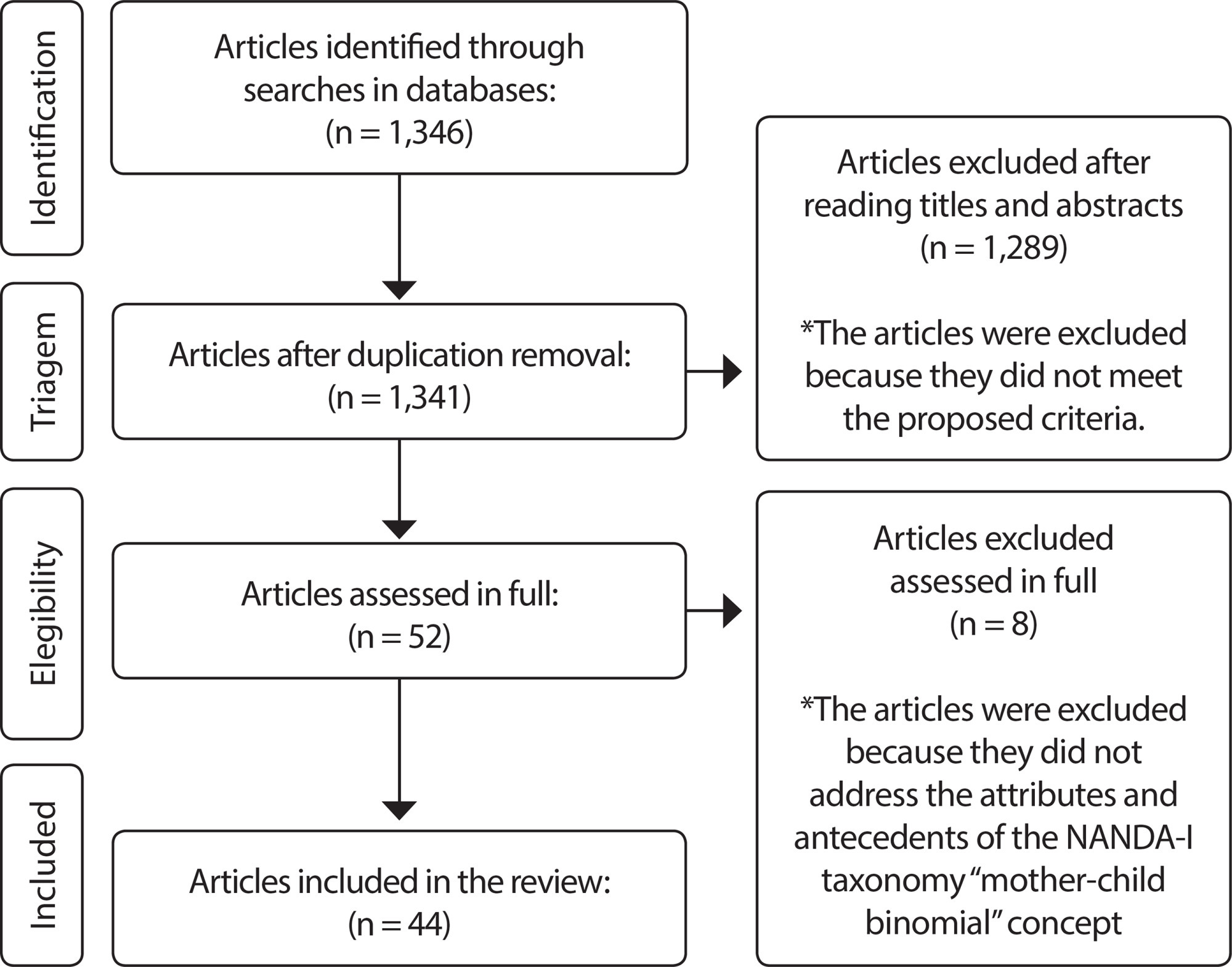
-
REVIEW11-06-2020
Suicide in the elderly: approach to social determinants of health in the Dahlgren and Whitehead model
Revista Brasileira de Enfermagem. 2020;73:e20200332
Abstract
REVIEWSuicide in the elderly: approach to social determinants of health in the Dahlgren and Whitehead model
Revista Brasileira de Enfermagem. 2020;73:e20200332
DOI 10.1590/0034-7167-2020-0332
Views0See moreABSTRACT
Objective:
Identify in literature the social determinants of health related to suicide in the elderly, according to the model proposed by Dahlgren and Whitehead.
Method:
Integrative review of articles indexed in the databases BDENF, CINAHL, LILACS, and MEDLINE, with the following main descriptors: aged, suicide, social determinants of health, and risk factors. Primary studies were included which addressed social determinants of health and suicide in the elderly.
Results:
From the 19 articles analyzed, three categories emerged: proximal social determinants of health (male gender, mental disorders, physical illnesses, white race, 70-74 years old); intermediate social determinants of health (substance abuse, use of alcohol or psychotropic drugs, marital status, marital, social, and family problems, violence, previous suicide attempt, history of admission to psychiatric service); and distal social determinants of health (schooling, economic issues, sanitation, stressful events).
Conclusion:
Proximal determinants have more effects on suicide. Intermediate determinants are composed mainly of changeable factors. Distal determinants showed lesser associations.

Search
Search in:
Nuvem de Tags
Enfermagem (930)Cuidados de Enfermagem (269)Atenção Primária à Saúde (239)Idoso (208)Educação em Enfermagem (151)Segurança do Paciente (150)Saúde Mental (145)Educação em Saúde (139)Estudos de Validação (131)Qualidade de Vida (104)Tecnologia Educacional (100)Promoção da Saúde (99)COVID-19 (91)Criança (91)Família (87)Enfermagem Pediátrica (86)Saúde do Trabalhador (86)Adolescente (85)Saúde Pública (82)Estudantes de Enfermagem (77)




